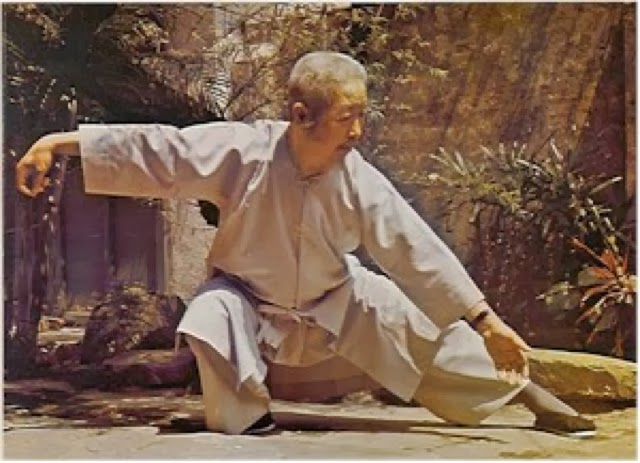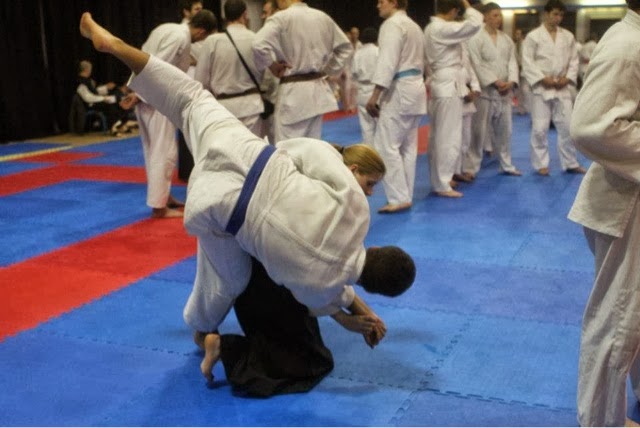This remains one of the most interesting Aikido videos for me ever. I had developed a very exacting idea of what the different basic kata were supposed to look like as a Nikyu when I saw this for the first time. Of course, while I was focused on "Correct," Morihei Ueshiba was doing things differently. I can process what I see here, and I can't always with his later video work.
Why refer to it today?
There are no sacrifice throws in Aikido, or Aikikai proper apparently. In doing some kaeshi-waza the other day, I finished the roll and did a nice, lazy, smooth yoko sutemi. I throw this young student, and he looks me in the eye. "That was straight-up Judo. That's not Aikido, is it?"
I wonder when that happened? It used to be that a martial arts master had a particular favourite skill, or maybe had to answer to the boundaries set by their environment and times. Knowledge was kept from rivals; knowledge was not refused. This vision of proprietory skills and information and dogmatic refusal to learn anything outside of a narrow world view has nothing to do with our history, nor the history of any martial art. As we in Aikido train to work with multiple attackers, any technique that involves reducing our mobility is undesirable. That does not mean that we never lose balance, never fall down or never find ourselves working from a disadvantage. Warriors developed new variations of a technique to answer to their circumstances and give themselves a slight advantage.
In the CAF, Kawahara Sensei had shown sutemi on a number of ocassions. Not every seminar, but about once a year he would throw some out for us to see. Maybe it was partly that we had icy or muddy streets for 7 months of the year or more. I learned these were seldom used, and did not leave you in a desirable position. This was never an opening move, but rather a belated response to being thrown. This was Kaeshi-waza, or reversals. Kaeshi-waza was for senior students, and not a required element until Ikkyu. Reversals could happen at any number of points during a kata, and being this late was not the goal but rather a reality we might need to acknowledge.
Fun cool fact: We don't need to learn anything different. Any of our traditional ukemi is the platform for a number of throws, locks and strikes from the ground. We just need to focus on maai and kuzushi. Above all, we need to be receptive to the movement being applied to us so that we can best use this incoming force.
Morihei Ueshiba was a Judo student for admittedly only around a year, but he never did much of anything halfway - a year for him was probably more than 3 years worth of hours in training for any of us. I don't know what his rank was when he moved. Several of his students were also students of Kano Jigoro, so he would have been well exposed to the theories and techniques of Judo and other arts. Aikido Journal and Youtube have some brilliant clips of Aikido Sutemi-waza in schools descended from students of both Kano Jigoro and Morihei Ueshiba.
This one clip of O Sensei in his 50s shows him doing a version of a sacrifice throw around 2:42. He is pulled out of seiza, and throws from on his back. The Noma dojo photo shoot shows the same technique. This is not a Judo technique to my knowledge.
If you look up the dictionary definition of a sacrifice throw, "putting oneself in a disadvantageous position to throw someone, LIKE falling (I read that as not necessarily falling)" then all of this dropping to one or both knees which seems to be much more popular these days starts to sound like a sacrifice throw. All of the multiple attacker work, all of the disarming an armed individual, all the hanmi handachi - isn't this all putting ourselves at a disadvantage and going forward anyway? A way of deliberately forcing ourselves into a disadvantageous position and taking advantage of a disadvantage?










